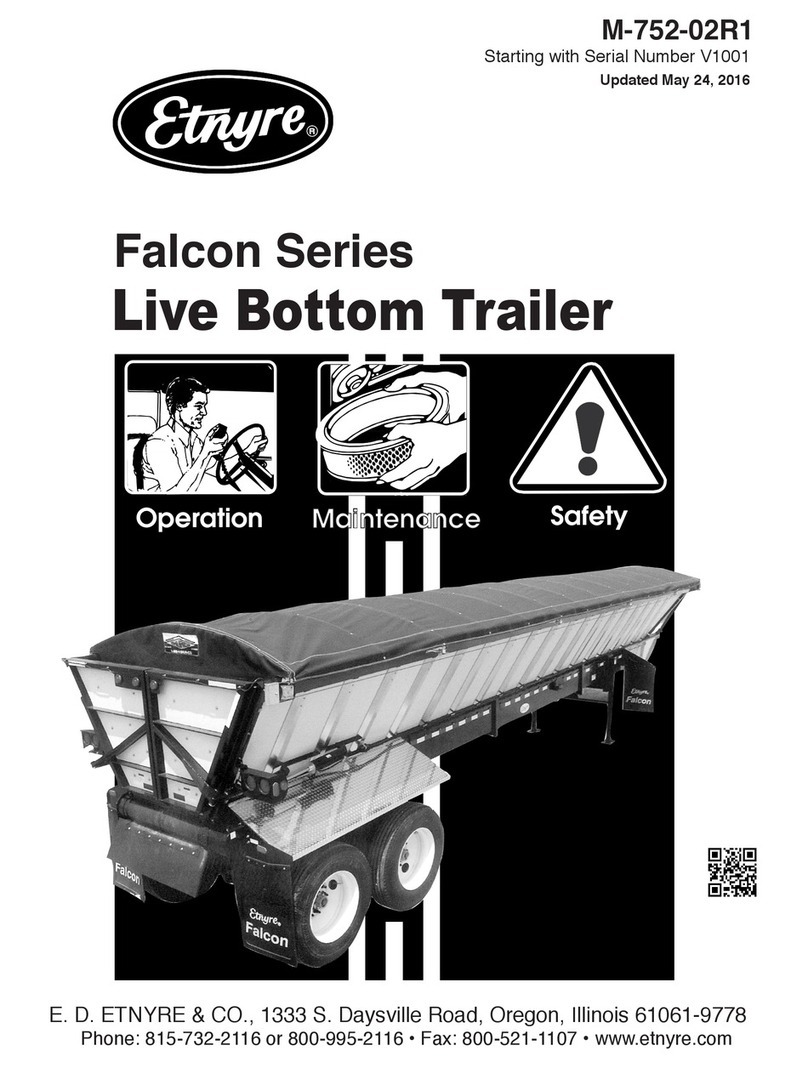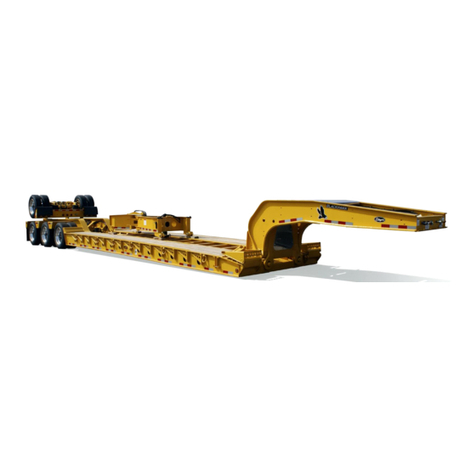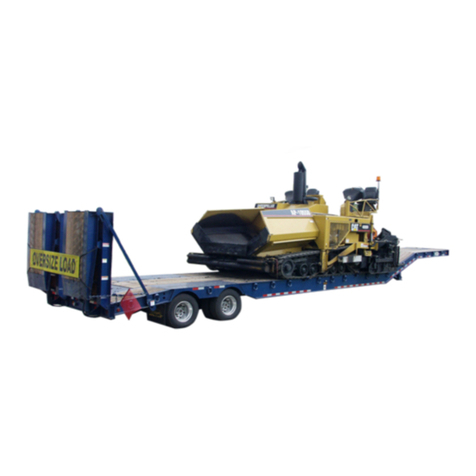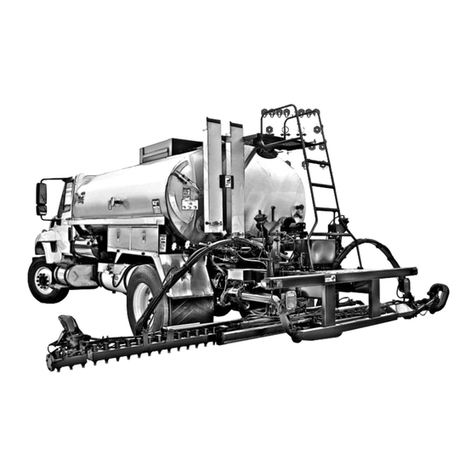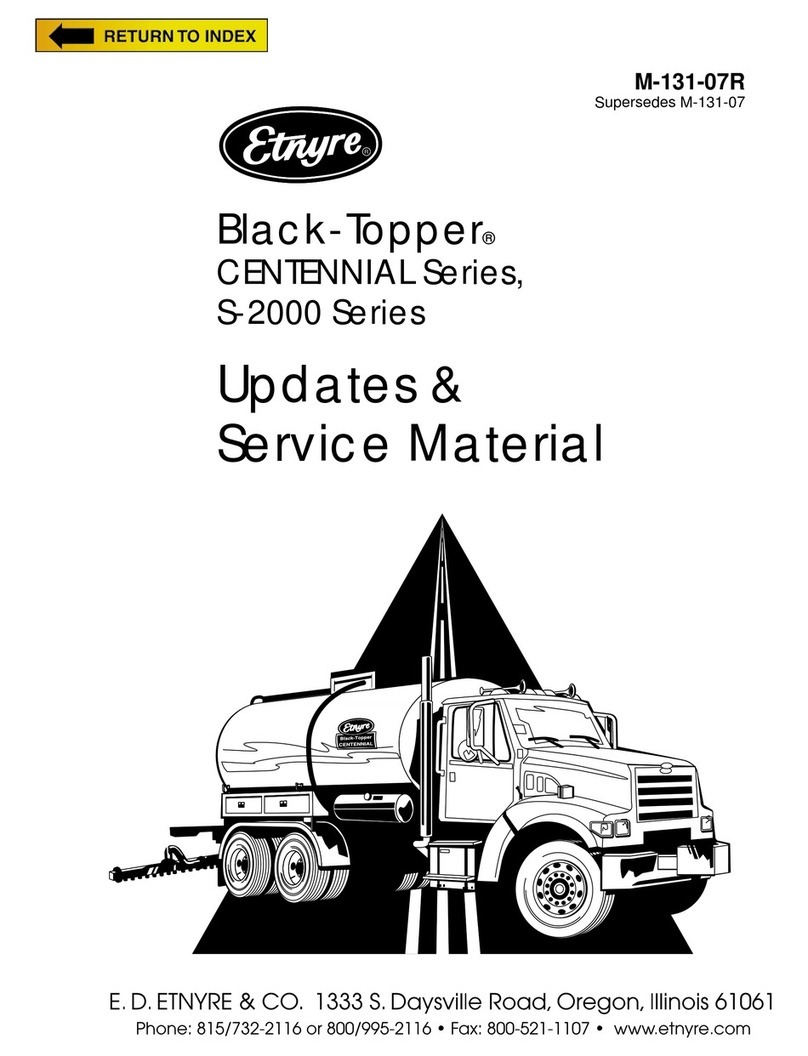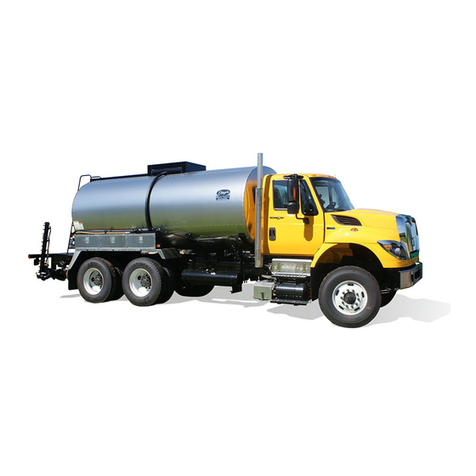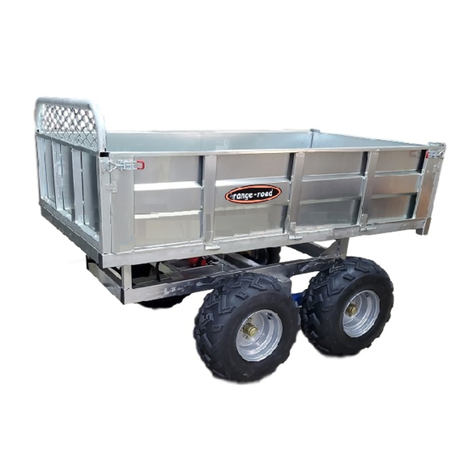
GENERAL
3
TABLE OF CONTENTS
List Of Illustrations
Figure 1 Using the Measuring Stick ................................19
Figure 2. Valve Positions - Filling Through the Fill Line ....20
Figure 3. Valve Positions - Filling Through the Manhole ...21
Figure 4 Valve Positions for Circulating in the Tank ........22
Figure 5. Valve Positions for Circulating in the Bar .........23
Figure 6. Adjusting the Spray Bar Nozzles .....................25
Figure 7. Adjusting the Spray Bar Height. .......................25
Figure 8. Valve Positions - Spraying Through Spray Bar. .26
Figure 9. Valve Positions - Suck Back of the Spray Bar..27
Figure 10. Valve Positions for Handspray. ......................28
Figure 11. Valve Positions for Handspray Suckback.......29
Figure 12. Valve Positions for Pump Off .........................30
Figure 13. Valve Positions for Transfer ...........................31
Figure 14. Valve Positions for Flushing...........................32
Figure 15. Manual Control Burner System......................34
Figure 16. Outfire Controlled Burner System ..................36
Figure 17. Burner System w/Auto Ignition & Temp Control ..37
Figure 18. Electric Burner System ..................................38
Figure 19. Burner Electrode Adjustments .......................41
Figure 20. Electrode Assembly Installation .....................41
Figure 21. Nozzle Adjustment .........................................41
Figure 22. Nozzle Angle Adjustment ...............................42
Figure 23. Nozzle Height Adjustment..............................42
Figure 24. Etnyre Asphalt Pump ....................................43
Figure 25. Fluid Cleanliness Chart..................................46
Etnyre Spraybar Nozzles ................................................48
Figure 26. Serial Number Plate Location ........................49
WARRANTY......................................................................1
Fluoroelastomer Handling .................................................1
TABLE OF CONTENTS ....................................................3
Warning And Instruction Plates .........................................4
General Safety Instructions...............................................5
Safety Precautions, Hazard Seriousness Level ................5
Introduction .......................................................................8
Reporting Safety Defects ..................................................8
Component Location And Identification ............................9
Hydraulic Tank and Components ....................................10
Spray Bar Component Identification ...............................10
Cab Control Panel........................................................... 11
Rear Control Panel .........................................................13
Cationic Emulsions .........................................................14
Set up of the Computer ...................................................15
Preparing for Operation ..................................................15
Engaging Pump on PTO Equipped Distributors..............17
Foaming ..........................................................................17
Asphalt Institute ..............................................................17
Tank Capacity .................................................................18
Mixing Dow-Corning DC-200 Anti Foam Agent ...............18
Filling Through the Fill Line .............................................18
Connections and Preliminary Checks .............................18
General ...........................................................................19
Filling from the Cab .........................................................19
Filling from the Rear Control Panel .................................20
Filling through the Manhole.............................................21
Circulating Product in the Tank .......................................22
Circulating in the tank from the cab ................................22
Circulating in the Tank from the Rear Control Panel .......23
Circulating Product in the Bar .........................................24
Spraying Operations .......................................................24
Adjusting the Spray Bar Nozzle Angle ............................25
Adjusting the Spray Bar Height .......................................25
Spraying through the Bar ................................................25
Setting the Digital Memory Presets.................................26
Suckback from the Cab...................................................27
Handspraying ..................................................................28
Suck Back for Hand Spray Operations ...........................29
Pump Off Operations ......................................................30
Transfer Operations ........................................................31
Flushing Operations ........................................................32
HeatingAsphalt w/ Liquid Propane Gas (LPG) Burners...33
LPG Supply Tank Requirements .....................................33
Manual Control Burners ..................................................33
Burner Operation ............................................................33
Figure 15. Manual Control Burner System......................34
Burners With Outfire Controls .........................................35
Burner Operation with Outfire Controls ...........................35
Figure 16. Outfire Controlled Burner System ..................36
Burners with Automatic Ignition and Temperature Limiting
Control.............................................................................37
Burner Operation with Auto Ignition & Temp Control.......37
Electric Driven Burner Operation ....................................38
Troubleshooting ..............................................................39
Maintenance ...................................................................41
Electrode Assembly Adjustments ....................................41
Burner Air Band Settings.................................................41
Check Ignition Transformer Spark ..................................41
Fire Burners ....................................................................42
Adjusting Spray Bar Nozzle Angle ..................................42
Adjusting Spray Bar Height .............................................42
Servicing The Etnyre P-15 Pump....................................43
Vacuum Check ................................................................43
Pump Disassembly And Inspection.................................43
Impeller Installation And Pump Assembly .......................43
General Fuel Data And Heating Terminology.................44
Fuel Data.........................................................................44
Approximate Burner Fuel Consumption ..........................44
Low Pressure Fuel Oil.....................................................44
Kerosene Generating ......................................................44
Heating Terminology .......................................................44
Flash Point (Open Cup) ..................................................44
Closed Flash Point ..........................................................44
Fire Point.........................................................................44
Ignition Temperature
(Kindling Temperature)....................................................44
Convection ......................................................................44
Conduction ......................................................................44
Hydraulic Fluid Requirements .........................................45
General Information ........................................................45
Hydraulic fluid requirements ...........................................45
Viscosity & Temperature Requirements ..........................45
Contamination Levels .....................................................46
Lubrication Chart.............................................................47
Etnyre Spraybar Nozzles ................................................48


